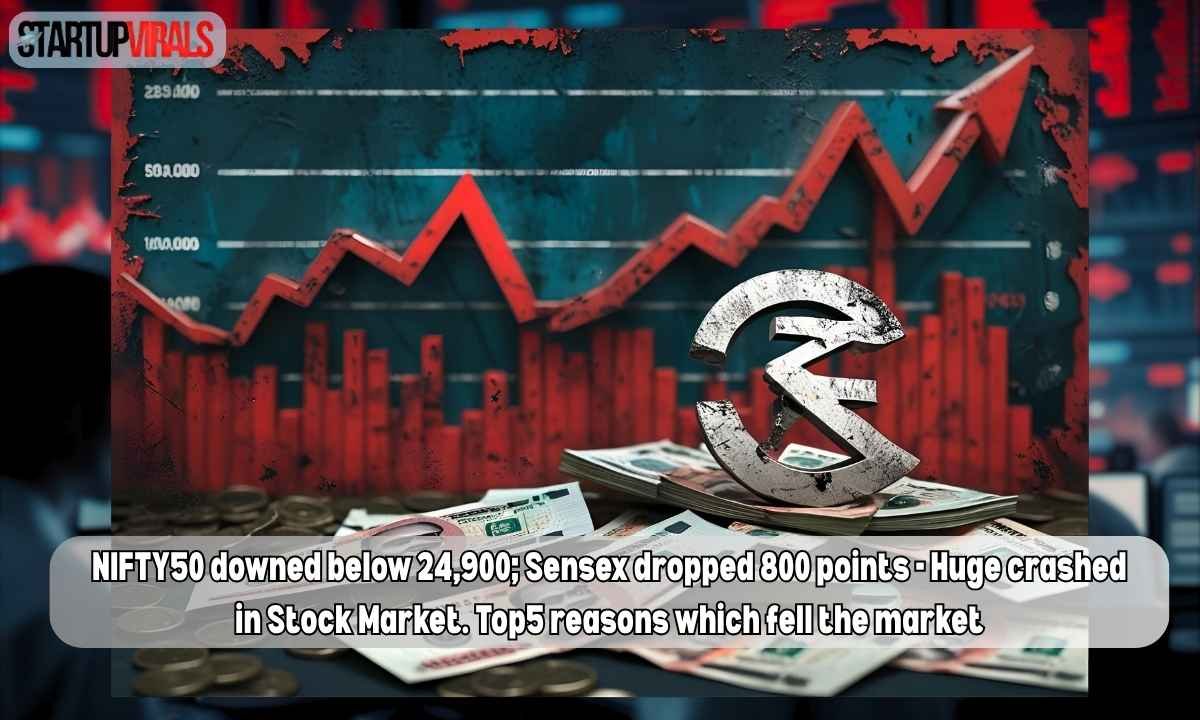There was a steep fall in Indian stock markets on Thursday. The Nifty50 index dipped below 24,900 and the Sensex shed over 800 points intraday but closed with a comparatively lesser loss. The decline was across the board, as all sectoral indices closed in the negative except Nifty Auto. Investor sentiment got disturbed by a combination of overseas and domestic catalysts. The fall came amid heightened geopolitical tensions between Israel and Iran. And have been in place for a few days and do not look like easing. The dispute has created volatility in crude oil prices and risk aversion globally.
Major Reasons for the Stock Market Drop
Middle Eastern Geopolitical Tensions
The war between Israel and Iran has escalated, with the two nations conducting missile and drone strikes. This heightened risk aversion around the globe since investors fear that a widening of the larger regional war . With that destabilize key routes of commerce underpinning the world economy. For India, which relies heavily on imports of oil, any disruption would make the cost of shipping & energy much higher. The risk of Iran closing off the Strait of Hormuz, a key choke point in global oil trade, has heightened market anxiety.
US Federal Reserve Policy Uncertainty
Investors kept a wary eye before the policy declaration of the US Federal Reserve, anticipating that the central bank would maintain interest rates. But the Fed’s forecast of just two interest rate cuts by the end of 2025 and cautions over lingering inflation and weaker US growth have stymied expectations of foreign capital flows to emerging markets. Uncertainty regarding the future path of US interest rates has spooked global investors, causing them to withdraw from riskier assets.
Weak Global Cues
Weak Global Cues Fears over a possible flare-up between Israel and Iran. Plus nagging doubts about sky-high U.S. tariffs, have pushed Asian and American markets into the red. Money managers are yanking cash from U.S. equities at the fastest clip in three months. That sudden switch to risk-off is easy to spot. Foreign institutional investors have also started pulling out of Indian stocks. The sell-off isn’t limited to just one country; across emerging markets. This appetite for risk has shrunk, and the slump in India is part of a much larger trend.
Global Trade and Tariff Tensions
Recently U.S. tariffs have jolted supply lines around the globe. And chatter about similar moves from other countries just adds fuel to the fire. Indian factories that live on exports now watch every headline with a nervous twitch. While skittish investors pull back to safer bets. The greenback, strutting tall, invites money that once flirted with emerging markets like India, especially now that bond yields promise a decent clip of interest.
Sector Blues and Foreign Pullback
Every corner of the stock market finished in the red; public-sector banks and software firms took the hardest lumps. Foreign funds kept retreating, gripped by a general fear of risk, even as homegrown institutions tried to catch falling knives and soften the blow.
Why You Should Care
When sell-offs hit both local and overseas investors, it whispers that the economic weather has turned ugly. Ongoing skirmishes abroad and jittery markets can yank out capital for months, weaken the rupee, and rattle the price tags on just about everything. With foreign buyers in the net-seller column, corporate earnings estimates look shakier, and bankers may need to keep their umbrellas close.
Expert and Public Reactions
Many market experts shrug and say the bounce still feels shaky. Sure, big Indian funds have stepped in, but old fears—inflation, spiking bond rates, and messy geopolitical rows-soak up almost all the blue sky. Retail traders are spooked. One week, they were high-fiving over 2024 gains; the next, the screen flashed red, and everyone hit pause. Most are saying I’ll wait and see, which only thickens the nervous air.
What to Look Forward To
Nobody expects calm anytime soon, especially with border fights still boiling and the Fed sitting on the fence about rates. The RBI could sell dollars to cradle the rupee, and SEBI might drop fresh rules to curb wild swings, yet those moves only buy a little time. The real bounce, if it comes, probably leans on lower global tensions and clearer signals from the world’s top central banks. Analysts sketch out a patchy, stop-and-start recovery, with corners like banking and infrastructure possibly leading the charge once valuations look fair again.
You can also read about:



